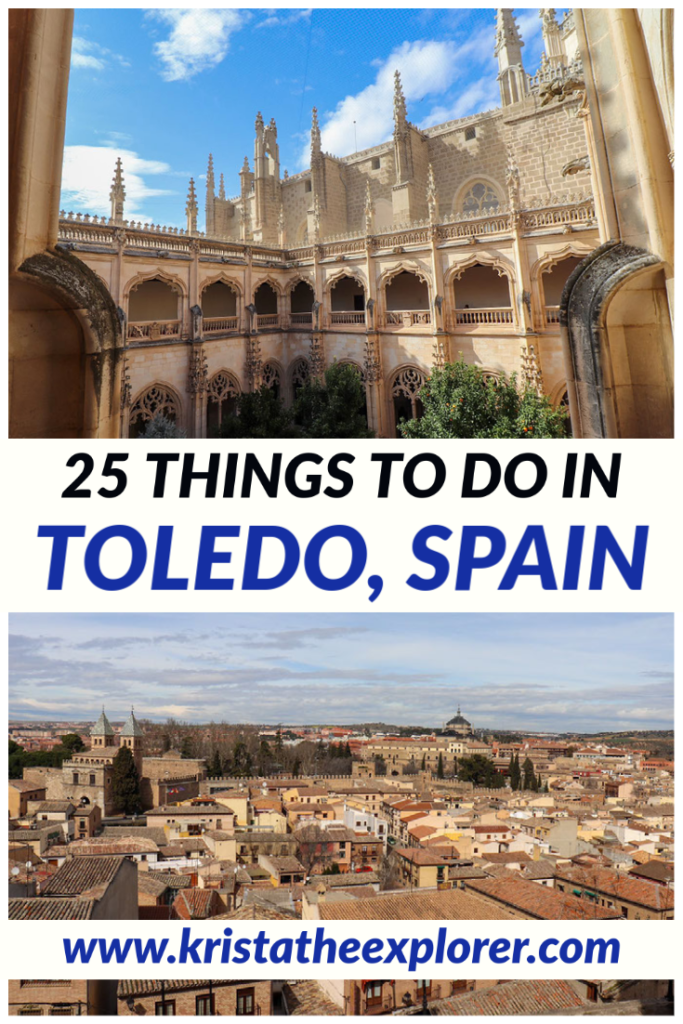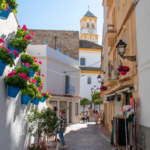Historic Spanish cities don’t come much better than Toledo. It was once known as the Imperial City because it was where the Holy Roman Emperor Charles V held his court. Toledo is also known as the City of the Three Cultures due to the blend of Christian, Jewish, and Muslim influence it’s had throughout its history. It’s safe to say that there are a lot of fantastic things to do in Toledo, and it’s considered one of the best day trips from Madrid too.
So, apart from its long rooted history dating back long before the Romans and the Visigoths, what exactly is Toledo known for? If you have a bit of a sweet tooth, you’ll be pleased to know that Toledo is the home of marzipan in Spain. Legend says that it was in fact invented by the nuns of the San Clemente convent in the 13th century during a famine. Toledo is also one of the best producers of saffron in the whole of Spain, and is one of two provinces that produces the famous Manchego cheese.
You’ll also notice that there are a lot of sword shops throughout Toledo because it’s been a steel-making centre for over 2000 years. Toledo steel was made into the standard source of weaponry for the Roman legions after Hannibal visited the city during the Punic Wars. The city was also the home of the famous artist El Greco, and his most famous works are still on display here.
There are plenty of things to do in Toledo, whether you’re planning a day trip from Madrid, or are stopping by during your Spanish road trip. To make it a bit easier to plan your itinerary, I’ve put together a list of the best things to do in Toledo, including some hidden gems.
25 things to do in Toledo
1. Walk along the trail below Puente de Alcantara
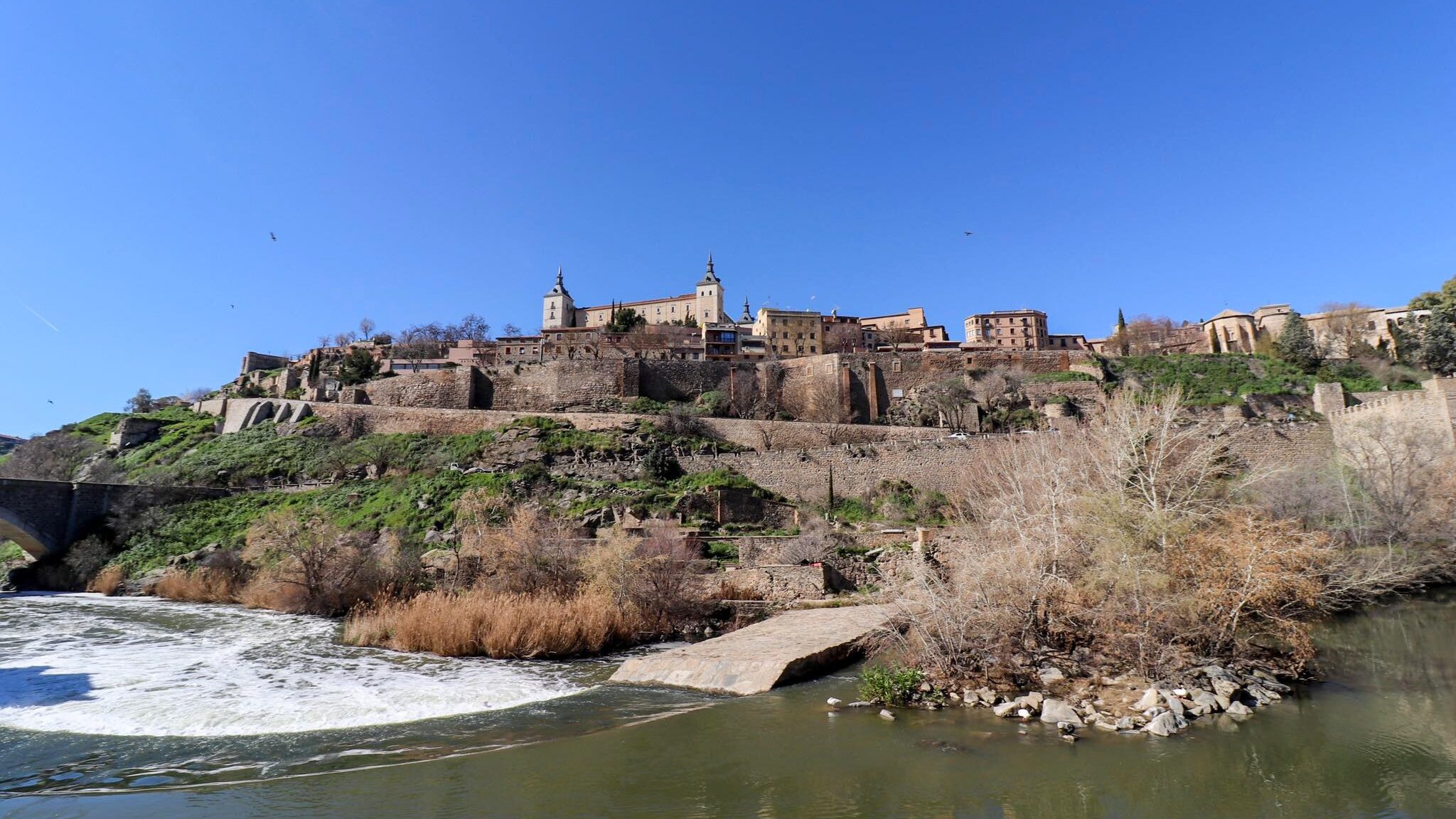
Toledo is a city that isn’t short on breathtaking viewpoints. There are a lot of viewpoints from within the historic centre, overlooking the rest of the city below and the surrounding landscape. But there’s one in particular that isn’t on many people’s list of things to do in Toledo.
One of the key attractions in Toledo is Puente de Alcantara – 1 of 2 historic bridges spanning the Tagus River. If you fully walk across the bridge, you’ll notice that there are a set of steps leading down to a walking trail along the side of the river. This is where you’ll get an amazing view of Toledo on top of the hill. One viewpoint we didn’t make it to was Mirador del Valle which is very popular and worth going to if you have some free time.
2. Walk along Puente de Alcantara
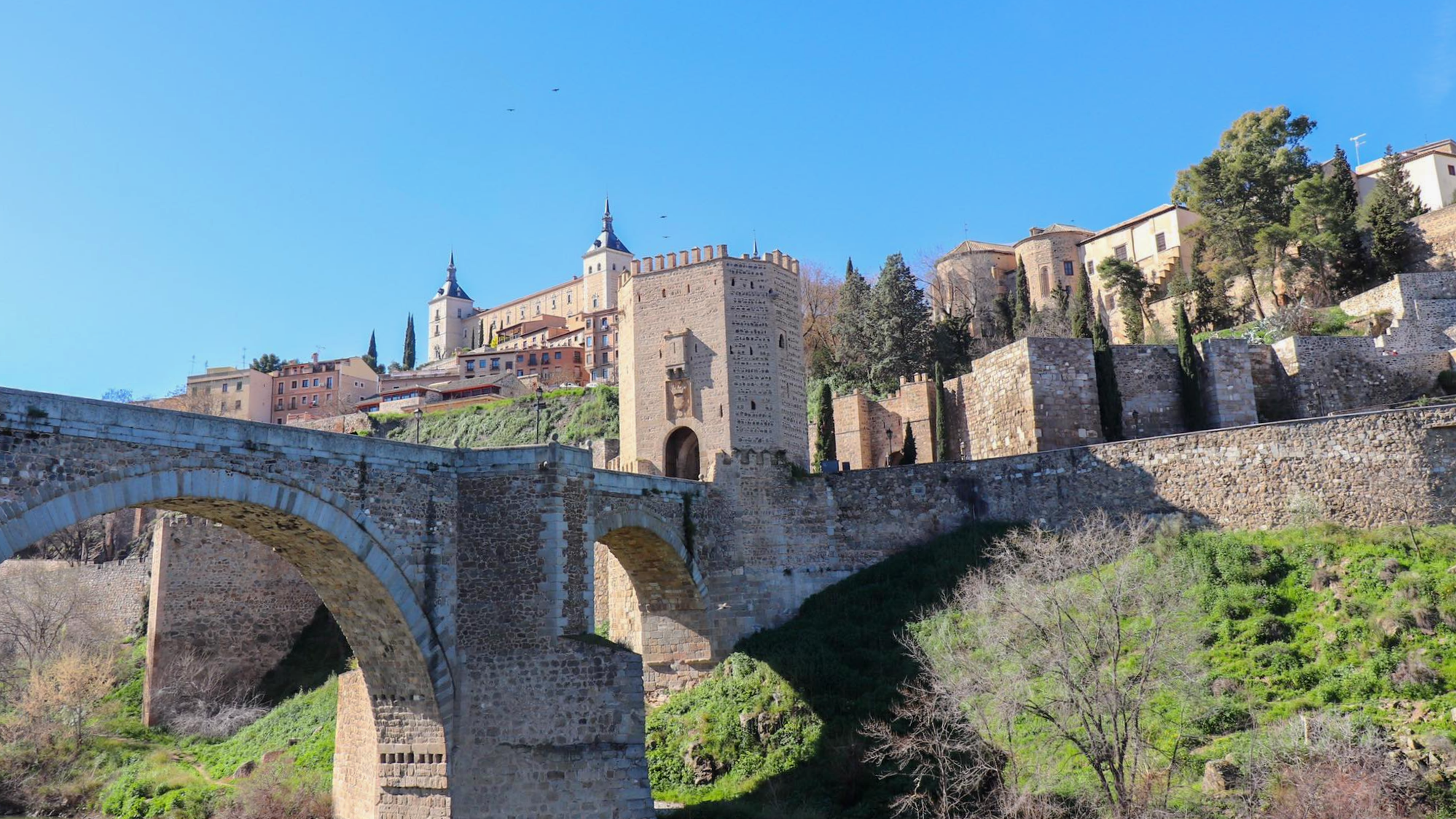
Puente de Alcantara is a Roman bridge connecting Toledo’s historic centre to Castillo de San Servando. Alcantara comes from the Arabic word meaning arch, and during the middle ages it was one of the main entrances to the city for pilgrims. The bridge has suffered quite a bit of damage over the centuries and has been rebuilt more than once, but there’s still evidence of its Roman origins there. It’s a beautiful bridge to walk across, and is one of the best free things to do in Toledo as well.
3. Take a look at Castillo de San Servando
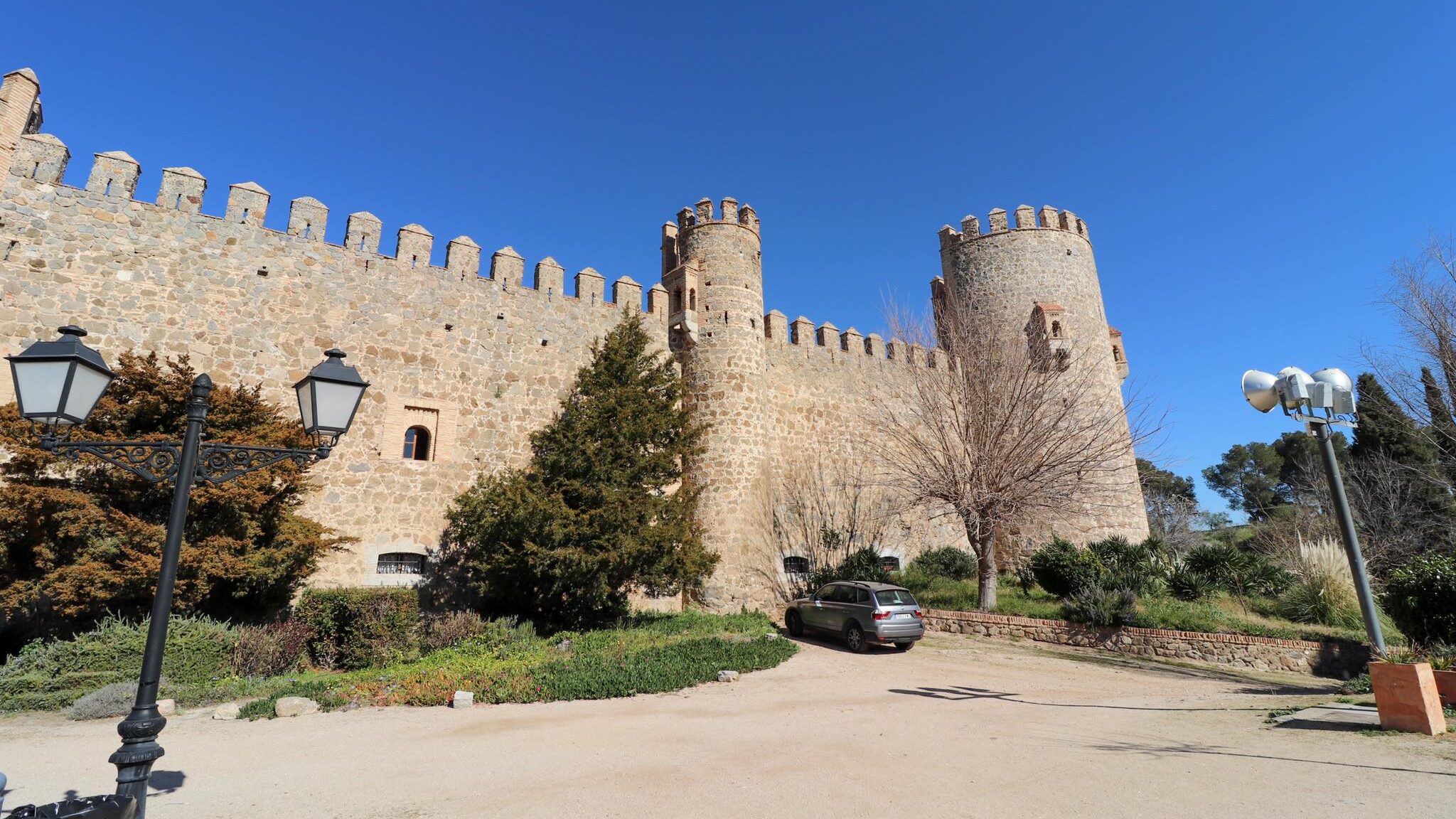
A short walk up the hill after crossing over Puente de Alcantara is Castillo de San Servando – an 11th century castle. The castle actually has earlier roots, as it was once a Benedictine monastery dating back to the 7th century, before being turned into a castle. Until the beginning of the 14th century, it was the Knights Templar who were given control of the castle in order to protect the bridge from an attack by the Muslims. Following the dissolution of the Templars in 1312, it slowly began to fall into disrepair, and is now used as a youth hostel.
4. Walk around the historic streets of Toledo
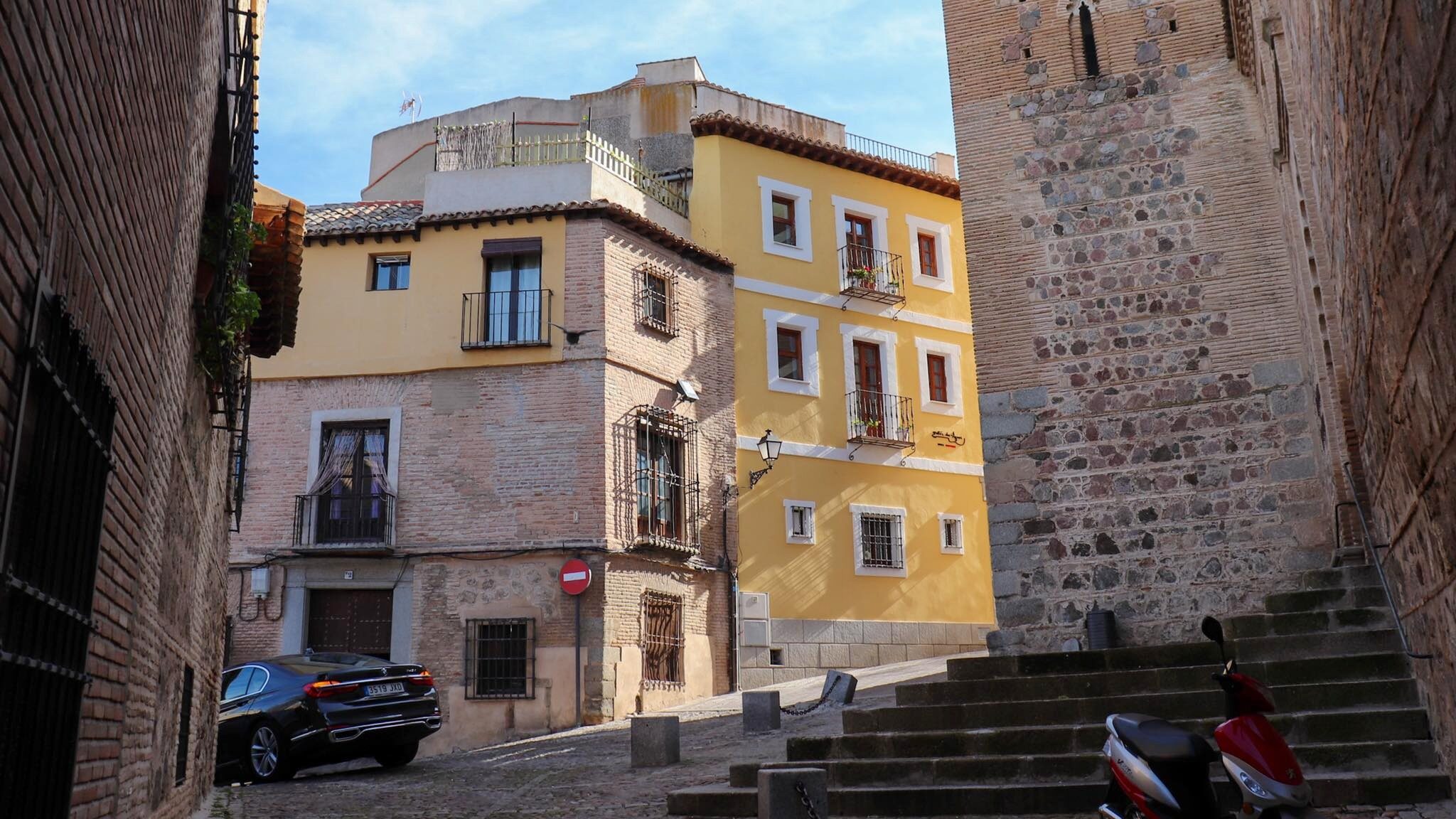
While you’re making your way between the main attractions in Toledo, take some time to walk around its lesser known historic streets. There are a lot of hidden gems in Toledo to find, and many beautiful buildings that date back to the medieval period. We made a stop at a number of churches, for example, which weren’t on our itinerary and hadn’t appeared in other blogs I had read. So keep your eyes peeled!
5. Discover Plaza de Zocodover
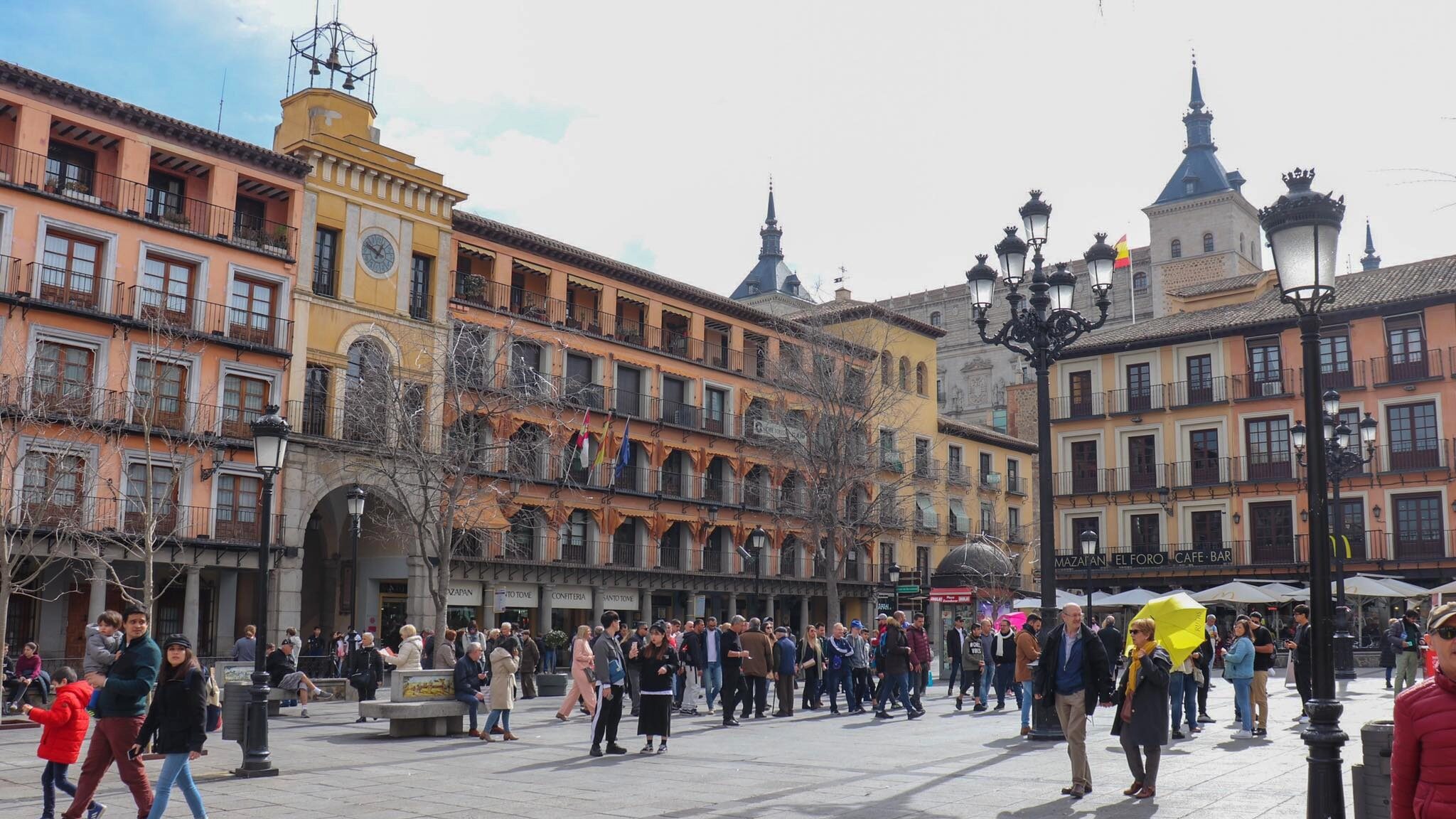
The heart of Toledo’s historic centre is Plaza de Zocodover. It’s the main square in Toledo, and is known as the plaza with many names because its name has changed so many times over the centuries. In the medieval period it would have been the plaza where animals were sold, and the buildings would have been used as inns for travellers.
One of the main attractions in Plaza de Zocodover is Arco de la Sangre (Arch of Blood) which gets its name from the image of Christ of the Blood underneath the clock. When Toledo was under Arab rule, this arch would have separated the city from the military compound. To the right of the plaza you will find the Alcazar de Toledo, which dates back to the Romans in the 3rd century, and was restored and used as a palace in the 16th century. Today it’s home to the Military Museum which is a very popular thing to see in Toledo.
6. Take a photo with the Estatua de Miguel de Cervantes
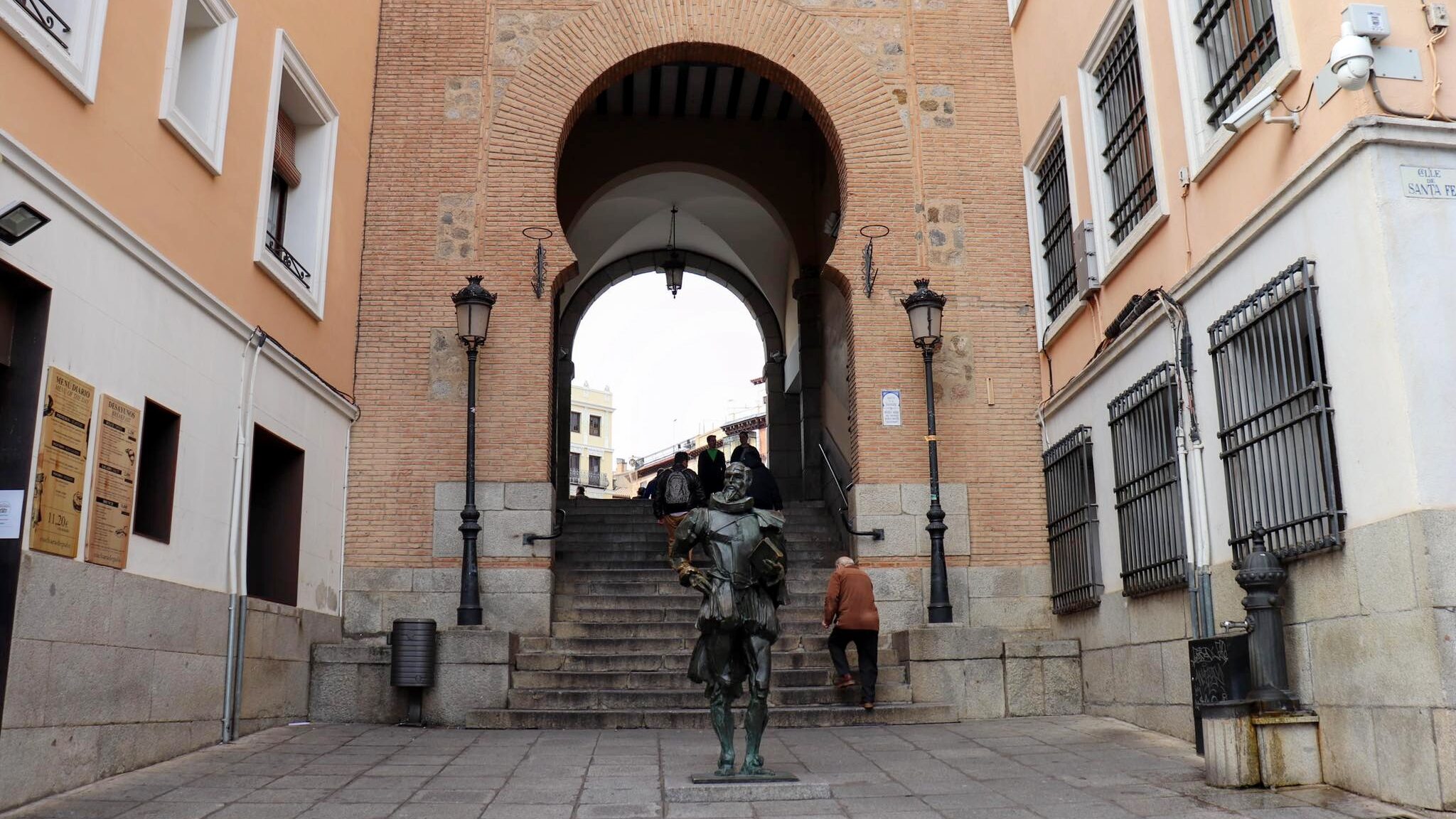
As you pass through Arco de la Sangre, you’ll notice a statue of a man standing in the middle of the pavement. This is a statue of Spain’s most famous writer, Miguel de Cervantes, who you’ll know as the author of the famous novel Don Quixote. Following our trips to Toledo and Segovia, we actually stopped at the windmills in Consuegra which are famous because of his novel. If you have a car I would highly recommend driving there – the scenery is beautiful.
7. Find some hidden gems in Toledo
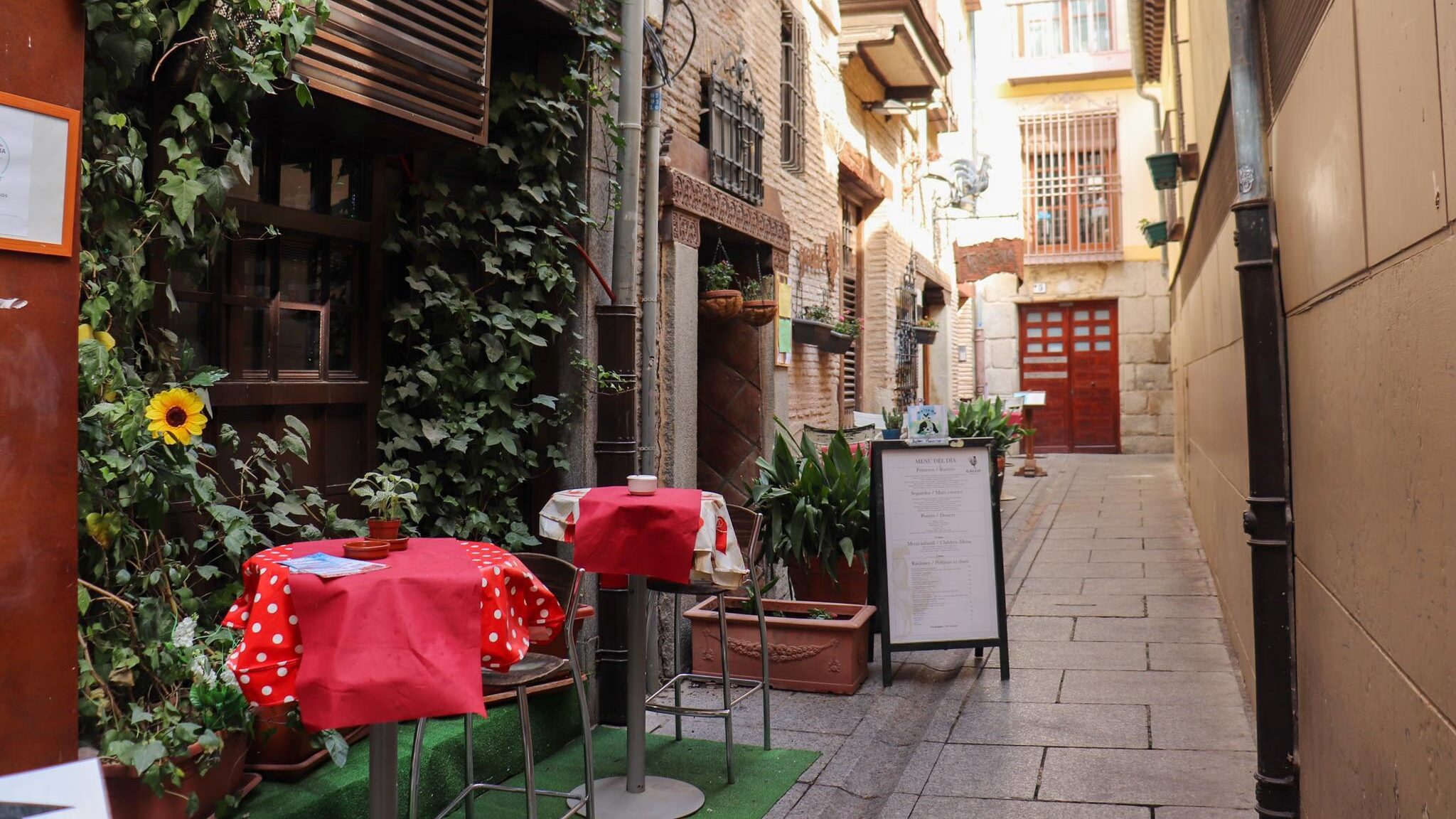
Like I mentioned before, Toledo is full of hidden gems. The main streets surrounding Plaza de Zocodover are filled with quaint shops and restaurants. But if you veer off these streets you’ll find little hidden corners where there aren’t too many tourists. The streets are relatively narrow too, so if you’re visiting Toledo in the summer months you’ll have no problem finding some shade to sit in. There are a lot of unique things to do in Toledo, but I guarantee you’ll find some places that weren’t originally on your itinerary just by walking around.
8. Have a big breakfast at Cafeteria la Pepa
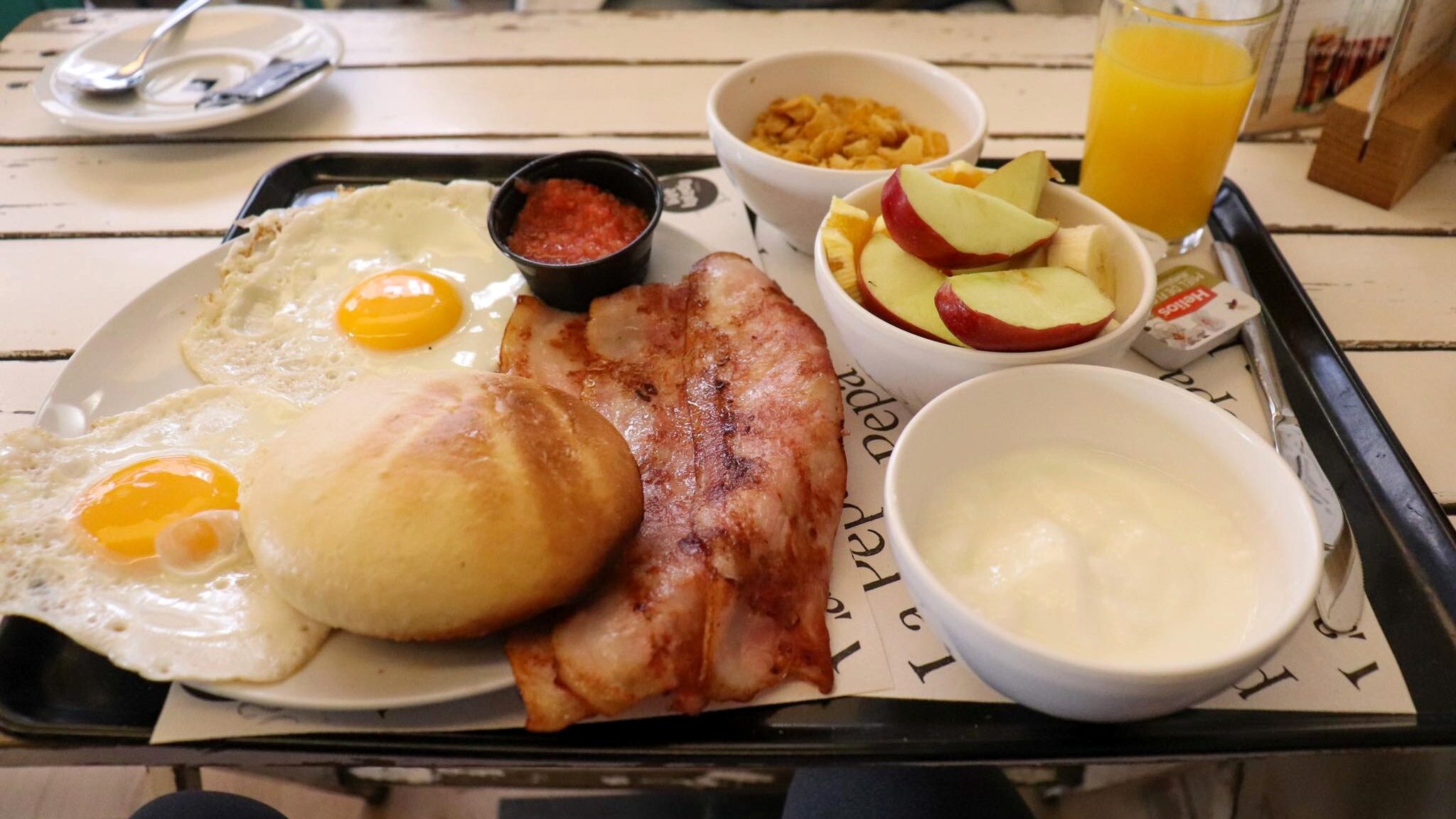
There are plenty of cafes and restaurants in Toledo to choose from, especially close to Plaza de Zocodover. We came across Cafeteria la Pepa walking from our campervan to the plaza and were blown away by their breakfast options. If you’re visiting Spain on a budget, you’ll want to eat here. The entire tray of food in the photo above was a breakfast offer that they had on and it cost only €5! The quality was really nice, and it was a much better option than paying €5 for just a coffee at the nearby Starbucks.
9. Sinagoga de Santa Maria la Blanca

One of the main things to do in Toledo is to visit the stunning Sinagoga de Santa Maria la Blanca. This synagogue was built in the 12th century, and is considered to be the oldest in Europe still standing. What’s interesting about this synagogue is that it was built for the Jews under the order of the Christian Kingdom of Castile, but the architects behind it were Muslim. It’s a prime example of the unity that existed between the 3 religions in this region during that time period.
Today it’s owned and preserved by the Catholic Church. The inside is absolutely stunning with its white painted arches and wooden beamed ceiling, and the entry fee is only €2.80.
I would recommend buying the Tourist Bracelet if you’re going to be visiting some of the main religious buildings in Toledo, which costs €9 and will give you entry into 7 monuments. You can purchase this at any of the monuments listed on their website.
10. Explore the streets in the Jewish Quarter
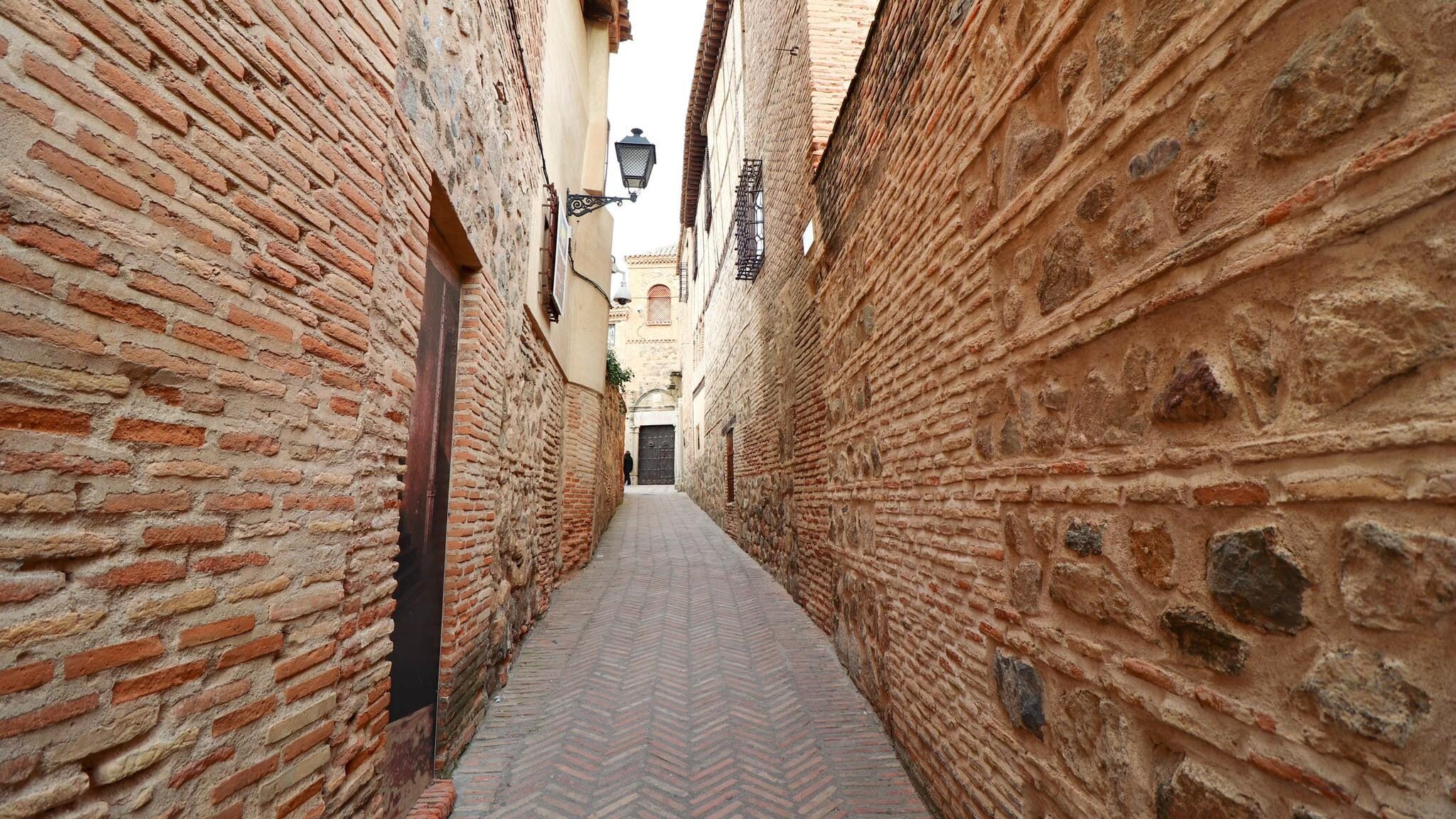
One of my favourite areas in Toledo is the Jewish Quarter. The narrow streets intertwining with one another really make you feel like you’re taking a step back in time, and there are plenty of interesting spots to visit here too. Close to the Jewish Quarter is where you’ll find Iglesia de Santo Tome (included in the Tourist Bracelet) which is home to El Greco’s famous 16th century painting The Burial of the Count of Orgaz. There’s also the Museo del Greco nearby, which is one of the best things to do in Toledo. This is where you can see other works by the famous Greek artist who called Toledo home.
11. Visit some shops in the Jewish Quarter

While you’re walking along the streets of the Jewish Quarter, I would recommend going inside at least one of the shops. Some of them are beautifully decorated and really eye catching, like this antique shop pictured above that we stumbled upon. We didn’t have time to stop at any of the restaurants, but they all seemed to be very popular with the locals. It may be worth researching some restaurants in Toledo, especially in the Jewish Quarter, before visiting.
12. Stop at Monasterio de San Juan de los Reyes
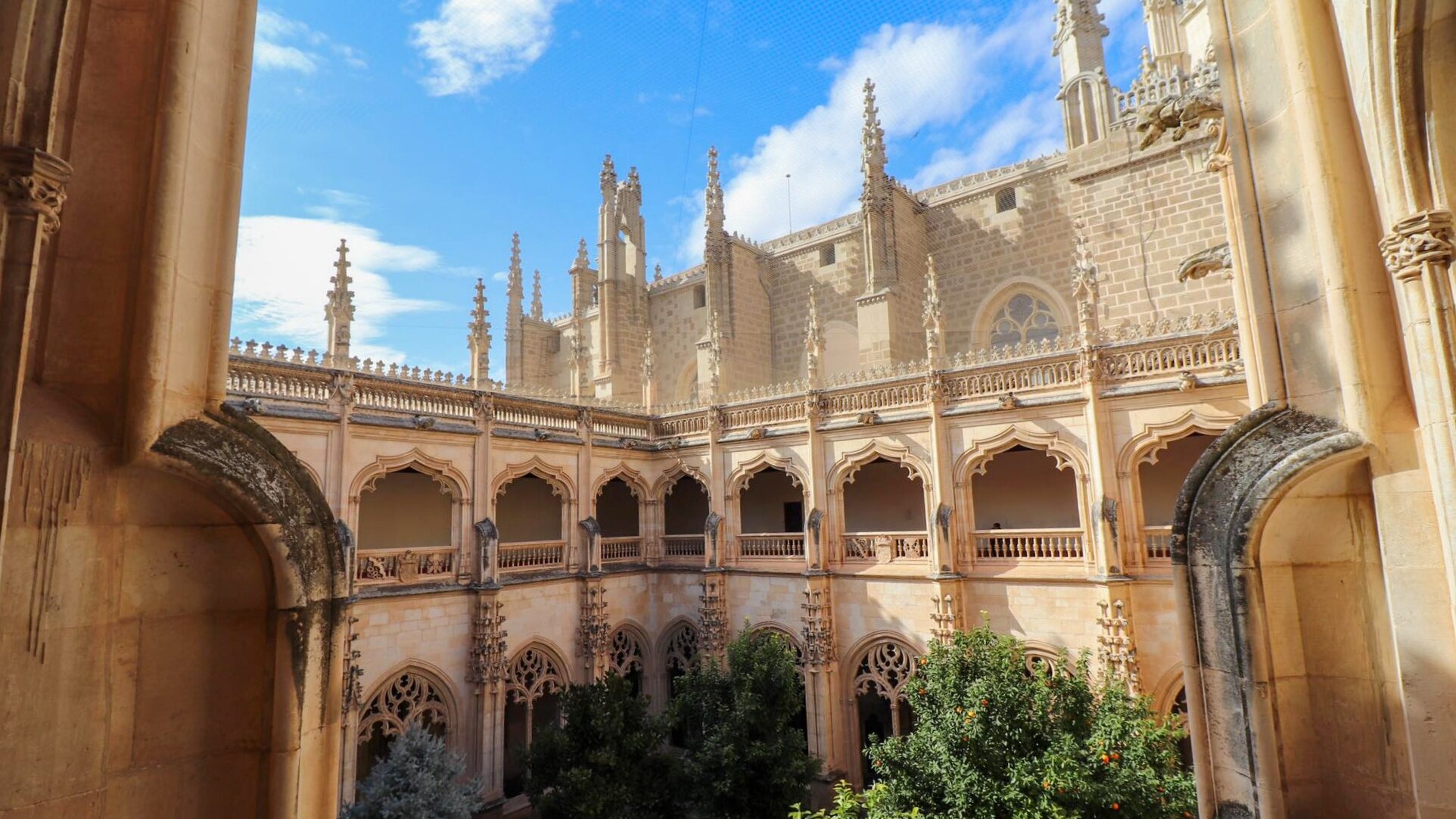
Since Toledo is a city where 3 religions come together, there are a lot of religious buildings that you can add to your itinerary. One of the most popular of these, and high on the list of the best things to do in Toledo, is the stunning Monasterio de San Juan de los Reyes (included in the Tourist Bracelet).
This Franciscan monastery was built by the Catholic monarchs in the 15th century, to commemorate the birth of their son as well as their victory over the Portuguese. The monastery was originally meant to be the final resting place of Ferdinand and Isabella, but they later chose Granada instead. In 1809 the monastery was badly damaged by Napoleon’s troops when they occupied the city, and it was only fully restored in 1967. It’s absolutely beautiful to walk around, and is one of the main attractions in Toledo so make sure you visit it.
13. Walk across Puente de San Martin
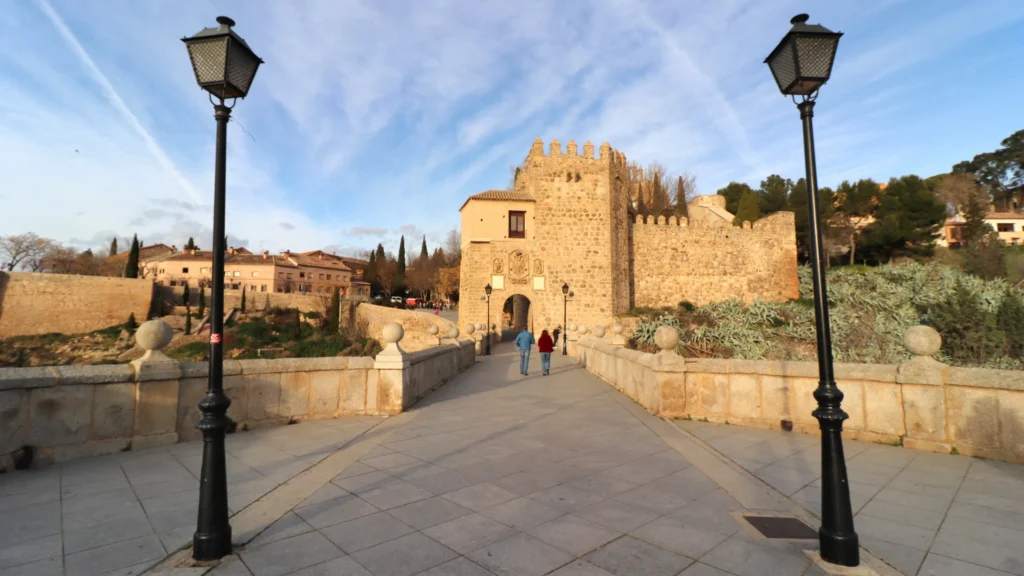
The second of the two historic bridges that cross the Tagus River into Toledo’s old town is Puente de San Martin. This medieval bridge was built in the 14th century using 5 arches, and was one of the longest bridges in the world at the time of its construction.
The story that goes along with this bridge is that the architect noticed a flaw the night before its unveiling. He told his wife that he would be disgraced and the bridge would collapse, so while he was sleeping his wife snuck out and burnt down the bridge. The architect was then able to rebuild it with the fixed calculation.
Visiting this bridge is one of the top things to do in Toledo, so it’s usually quite busy with tour groups. We visited Toledo in February so there were less people walking around which was perfect for photos.
14. Grab some croquettes
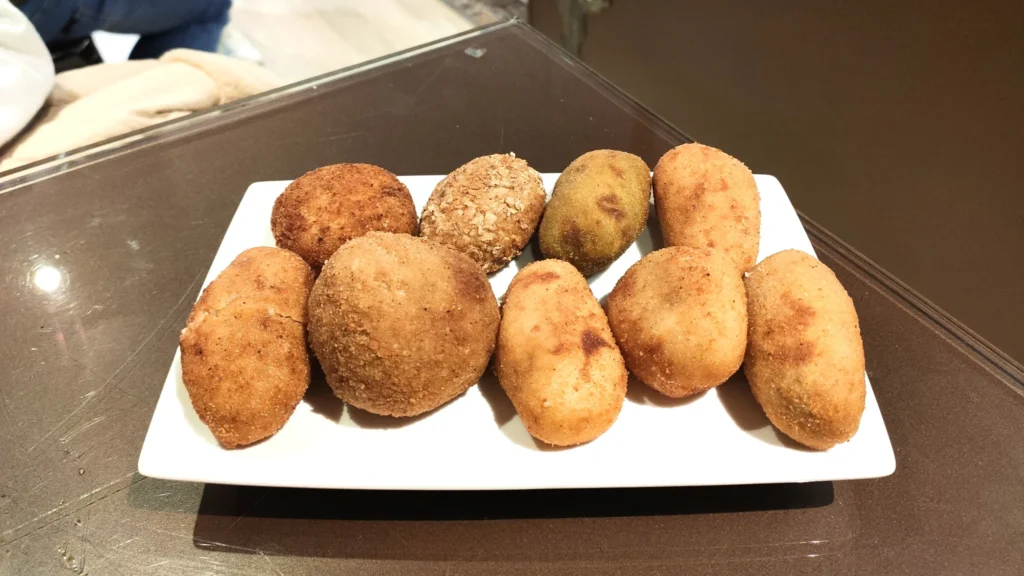
There are more than enough restaurants in Toledo to choose from. Many of the best ones are tucked away down narrow streets and are often missed by tourists. We found a fantastic small restaurant that served homemade croquettes just by wandering around, but sadly it’s now closed down. My biggest advice would be to avoid the restaurants around the main tourist areas as they’re often overpriced and low on quality.
15. Locate Plaza de Padilla

One of the many hidden gems in Toledo is Plaza de Padilla. This plaza wasn’t actually on my list of things to see in Toledo, and we came across it by chance while we were roaming around the streets. It’s a relatively small plaza compared to others in the city, but if you have some free time and want a quiet area to collect your thoughts, this is a lovely plaza to sit in.
The statue is of Juan de Padilla who lead an uprising against the policies of the Holy Roman Emperor Charles V. He’s still seen by many as a hero and a man that was ahead of his times. The statue took over two centuries to actually be erected, and they placed it where his house would have stood.
16. Visit the famous Santa Iglesia Catedral Primada de Toledo
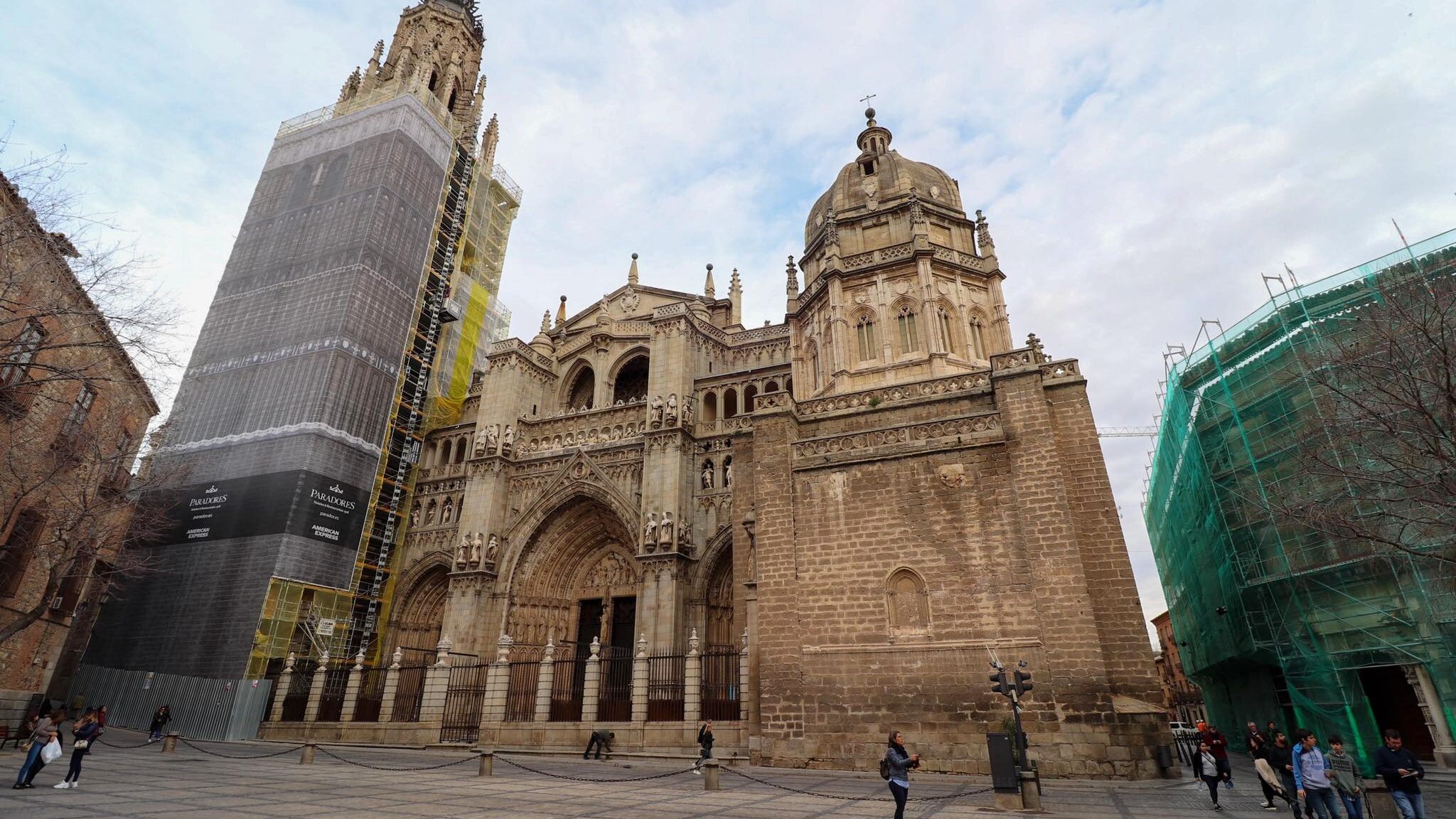
Santa Iglesia Catedral Primada de Toledo, or the Catedral de Toledo, dates back to the 13th century, but wasn’t completed until the 15th century by Ferdinand and Isabella. It’s considered by many to be one of the grandest cathedrals in all of Spain, and is one of the most important attractions to see in Toledo.
Unfortunately when we visited there was scaffolding on the tower, and the cathedral itself was closed so we weren’t able to go inside. The entry fee is around €10, so it’s one of the pricier things to do in Toledo, but based on the reviews it’s worth the money. The Ayuntamiento de Toledo and Palacio Arzobispal are both located in the same plaza as the cathedral so don’t forget to take a photo of them as well.
17. Walk through Puerta del Sol
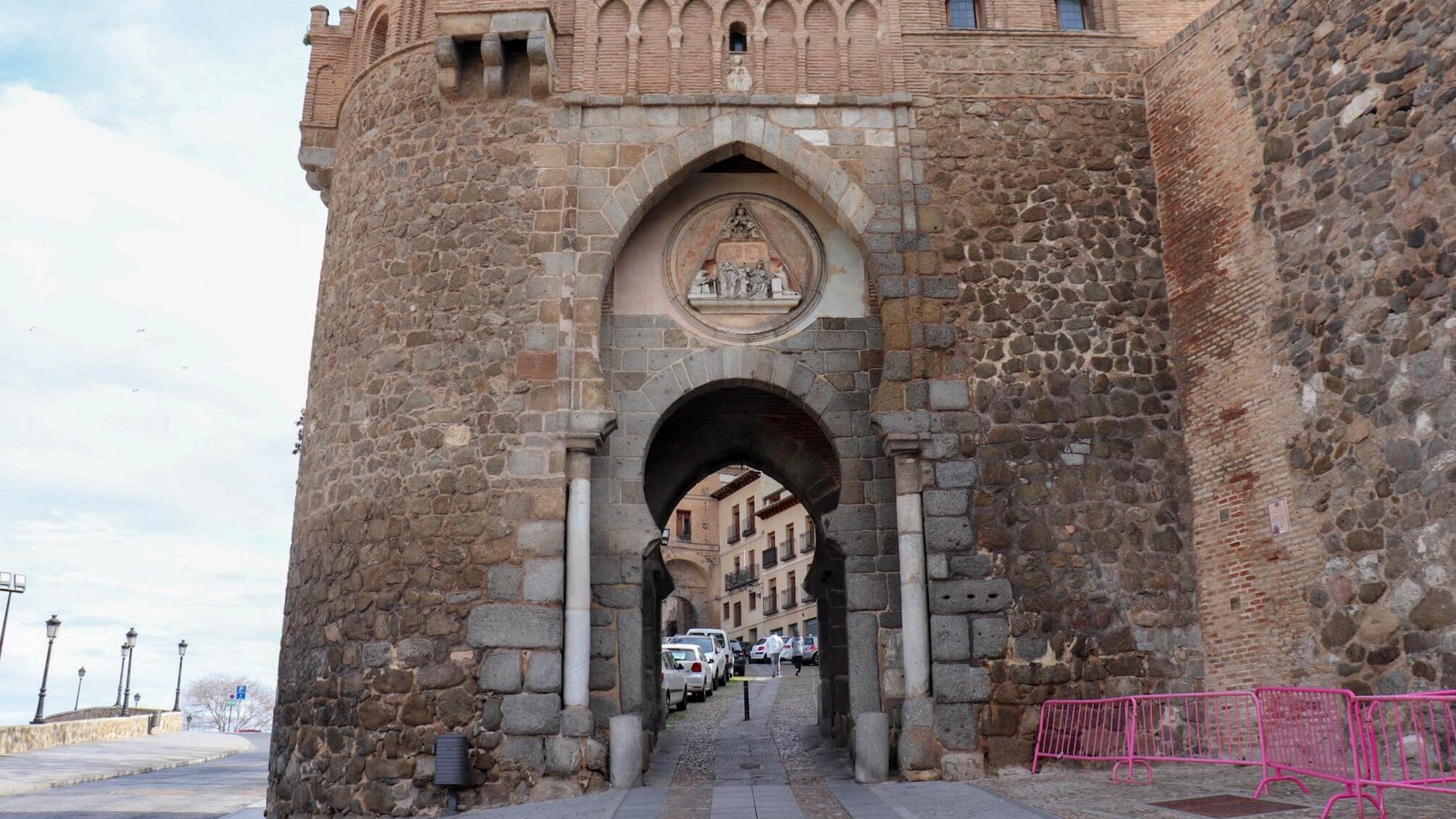
Running along the perimeter of Toledo’s old town is Puerta del Sol – a city gate built in the 14th century with a medallion above the horseshoe arch depicting the city’s patron saint. There are 2 images of the sun and the moon on the medallion as well. They were added in the 16th century and is where the name of the gate comes from (it’s also positioned facing the east where the sun rises). It’s actually one of the most photographed monuments in Toledo, and you can get some gorgeous views of the rest of the city below from the walking path next to it.
18. Step back in time at Mezquita del Cristo de la Luz
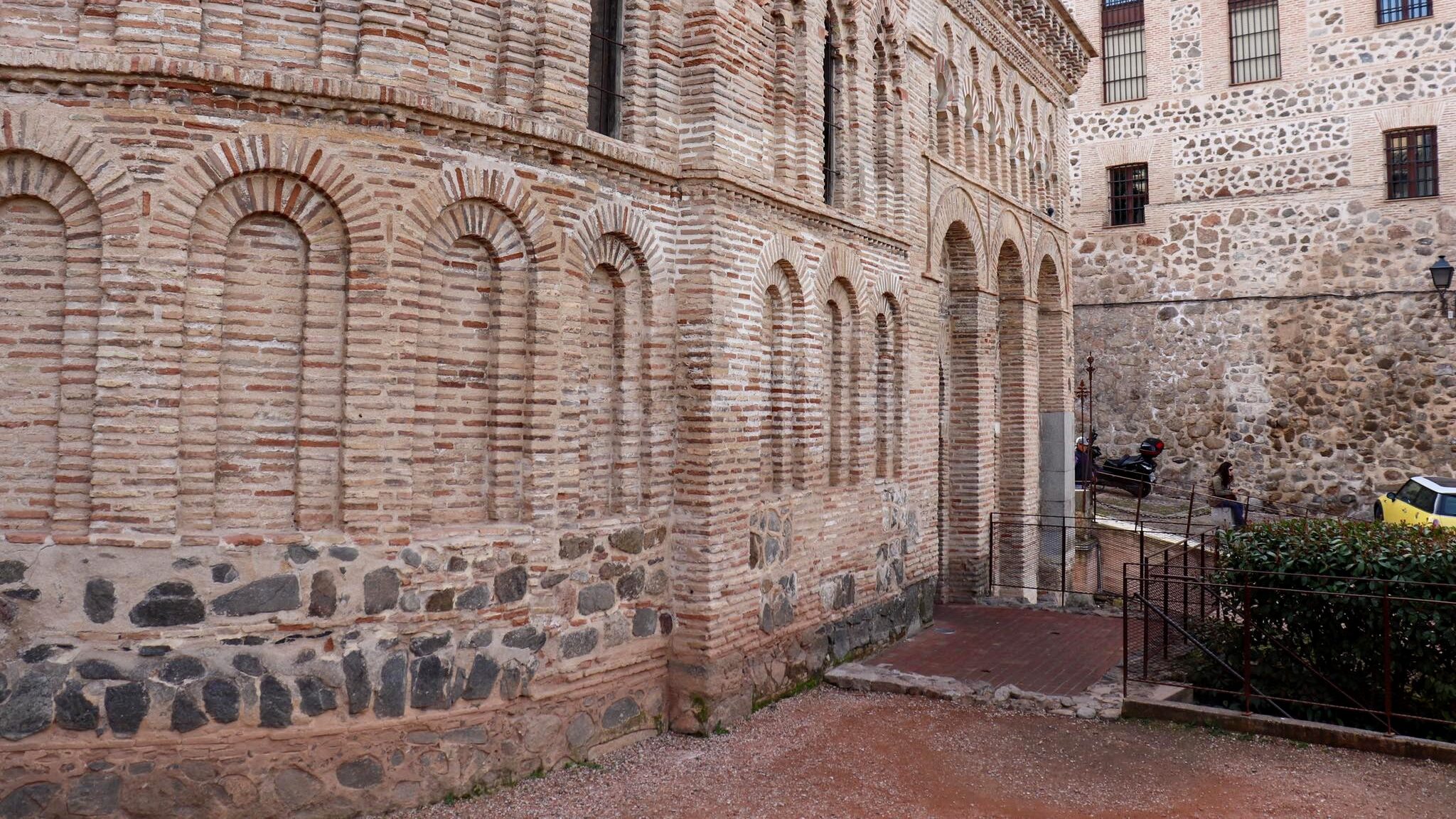
Mezquita del Cristo de la Luz (included in the Tourist Bracelet) was once a very important mosque in Toledo, and was 1 of 10 built within the city during the Moorish period. The mosque was turned into a church in 1085 when Toledo was taken over by the Christians. It’s said to be the location of the first mass held in the city following the king’s victory. The architecture inside is beautifully preserved, and it’s only a very small mosque so it’ll take you no time at all to visit. This is by far one of the best things to do in Toledo.
19. Admire the views from Mezquita del Cristo de la Luz
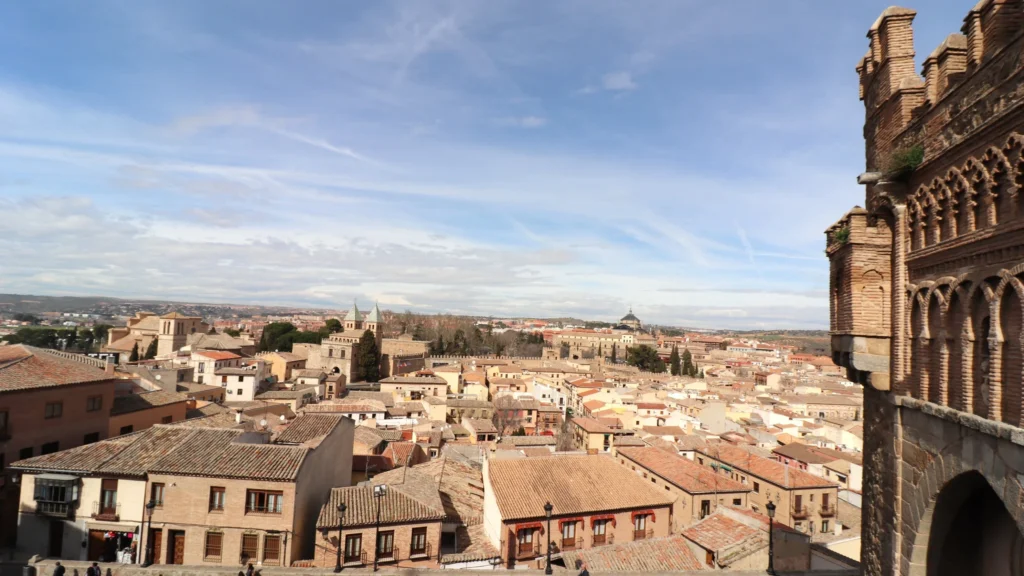
As I said before, some of the best things to do in Toledo include viewpoints. One of my favourite views can be found in the gardens of Mezquita del Cristo de la Luz. From here you’re able to see another part of the UNESCO World Heritage Site that you may not necessarily have time to walk around. We were fortunate enough to have this viewpoint to ourselves so we spent quite a while here taking in the views and getting some photos.
20. Marvel at Iglesia de Santiago del Arrabal
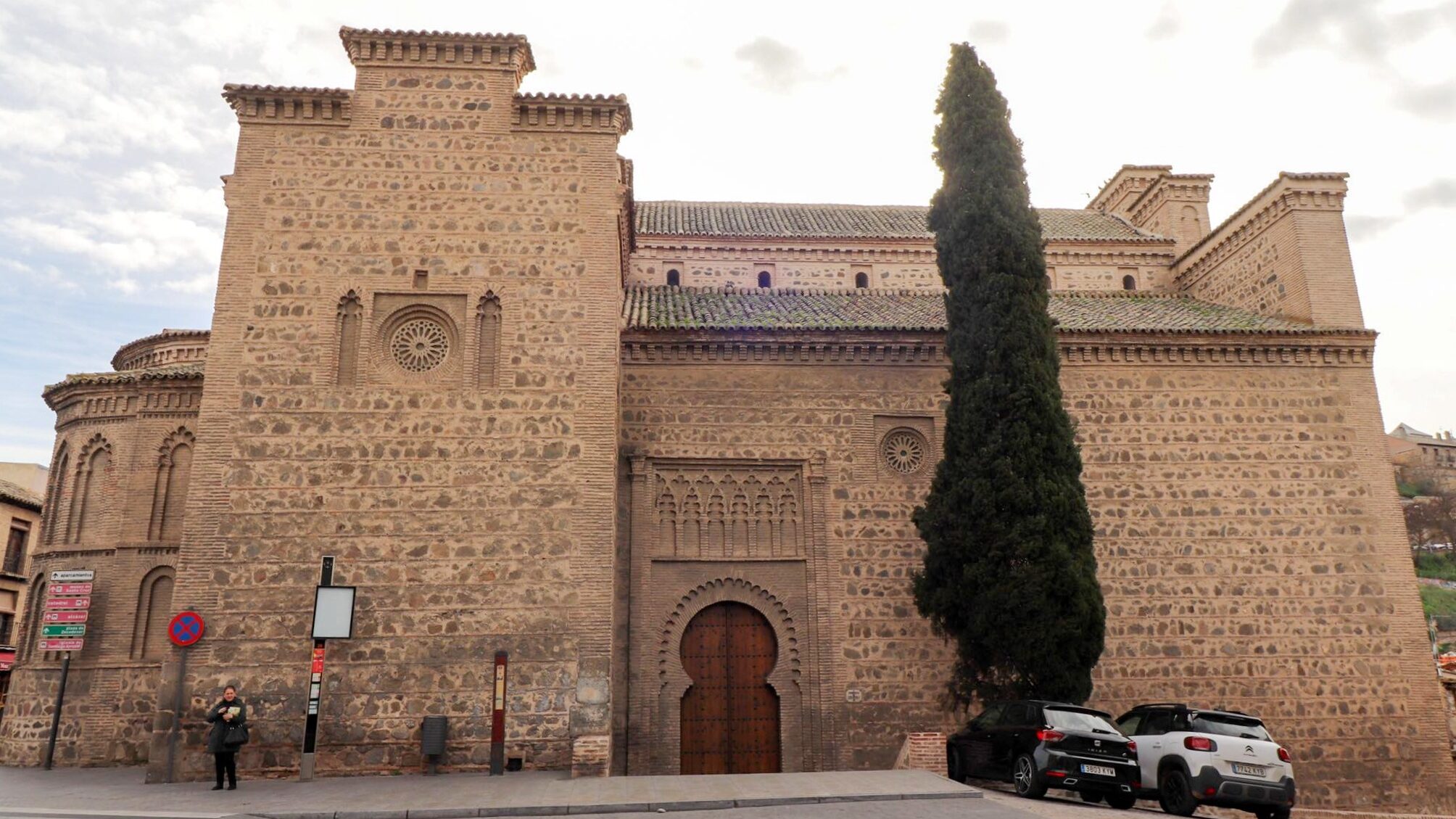
As far as churches in Toledo go, Iglesia de Santiago del Arrabal is one of the most impressive. It was built in the 13th century on the site where there was once possibly a mosque. You can easily pick out the Islamic architectural styles in the church, such as the horseshoe arch in the doorway. It’s the largest Mudejar church in Castilla-La Mancha and is located in the northern part of the historic centre. This was another church that was closed when we visited, but it’s close to a number of other key attractions and things to do in Toledo so we stopped by to take a photo.
21. Cross over to Puerta de Bisagra

Puerta de Bisagra was once the main access gate at the northern end of the city, and was constructed in the 16th century, though it has origins dating back to the Moorish period. Inside the gate you can find a small courtyard connecting both sides of the structure, and the coat of arms of Charles V on the wall. The photo above is what would have been the interior section of the gate, facing into the city. As you can see the gate now sits in the middle of a roundabout, so trying to get a photo of the front part of it is tricky.
22. Buy some treats at El Cafe de las Monjas
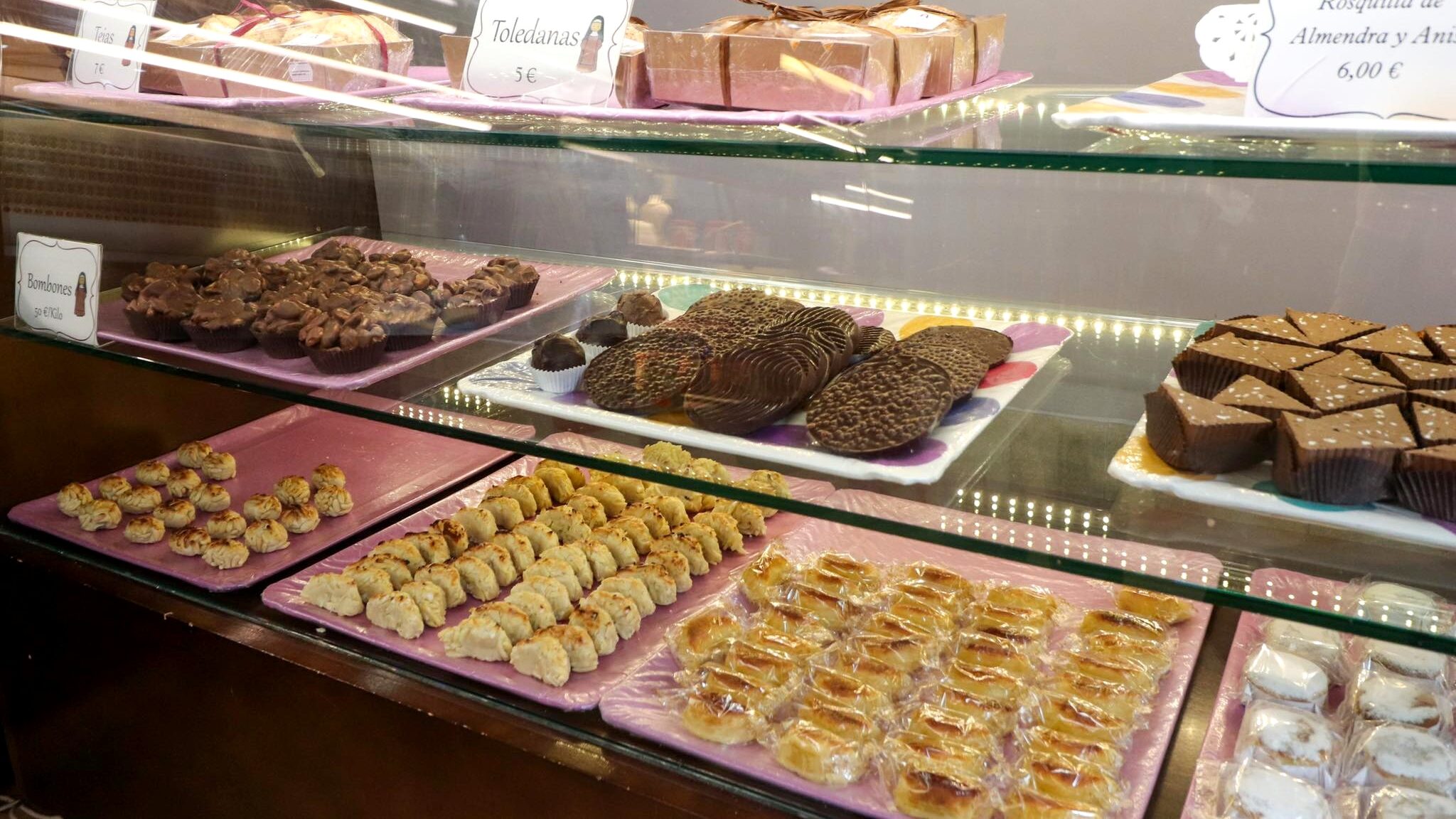
One of the most unique places to eat in Toledo is at a small cafe tucked away near the cathedral called El Cafe de las Monjas. What’s unique about this cafe is that many of the baked goods and marzipan bites are handmade by nuns from a nearby convent. These are noted with a photo of a nun on the label, so if you purchase one of their creations all of the money goes to the upkeep of the convent. We bought quite a few things from here and munched on them throughout the day.
23. Explore what’s beneath Iglesia del Salvador
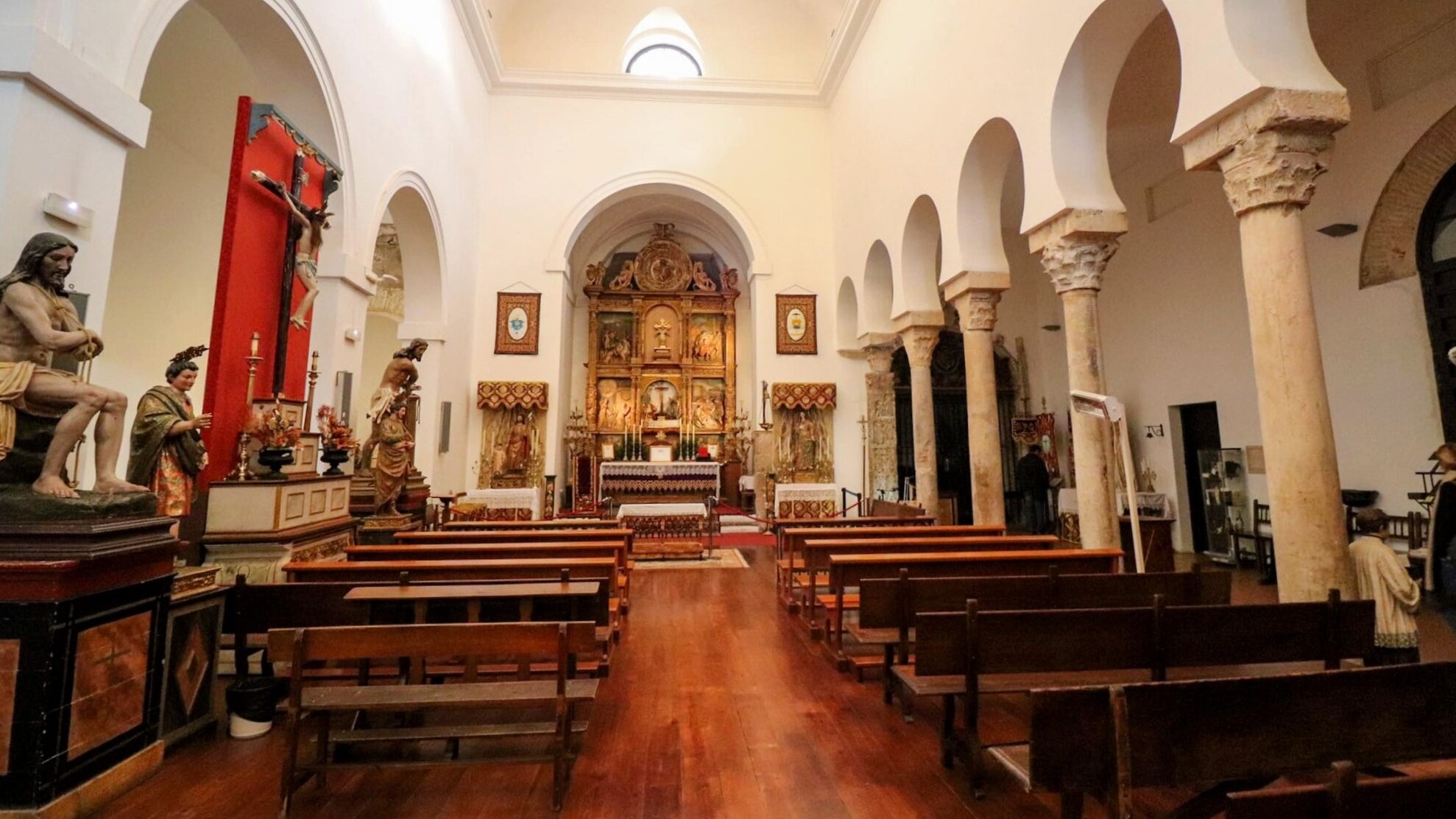
Another church in Toledo that’s also a bit of a hidden gem is Iglesia del Salvador (included in the Tourist Bracelet). It was built on the same site as an earlier mosque in the 12th century, and the mosque had been built on the site of a Visigothic religious building. On a few of the pillars you can still see some of the carvings from the Visigoths, though the faces were destroyed by the Muslims.
What’s fascinating about this church is that you can go into the basement and take a look at a small archaeological site. This is where you’ll find the remains of a small medieval Christian cemetery, as well as Visigothic and Roman remains. Visiting this church is one of the most underrated things to do in Toledo but it packs a lot of history into such a small building.
24. Be impressed by Real Colegio de Doncellas Nobles
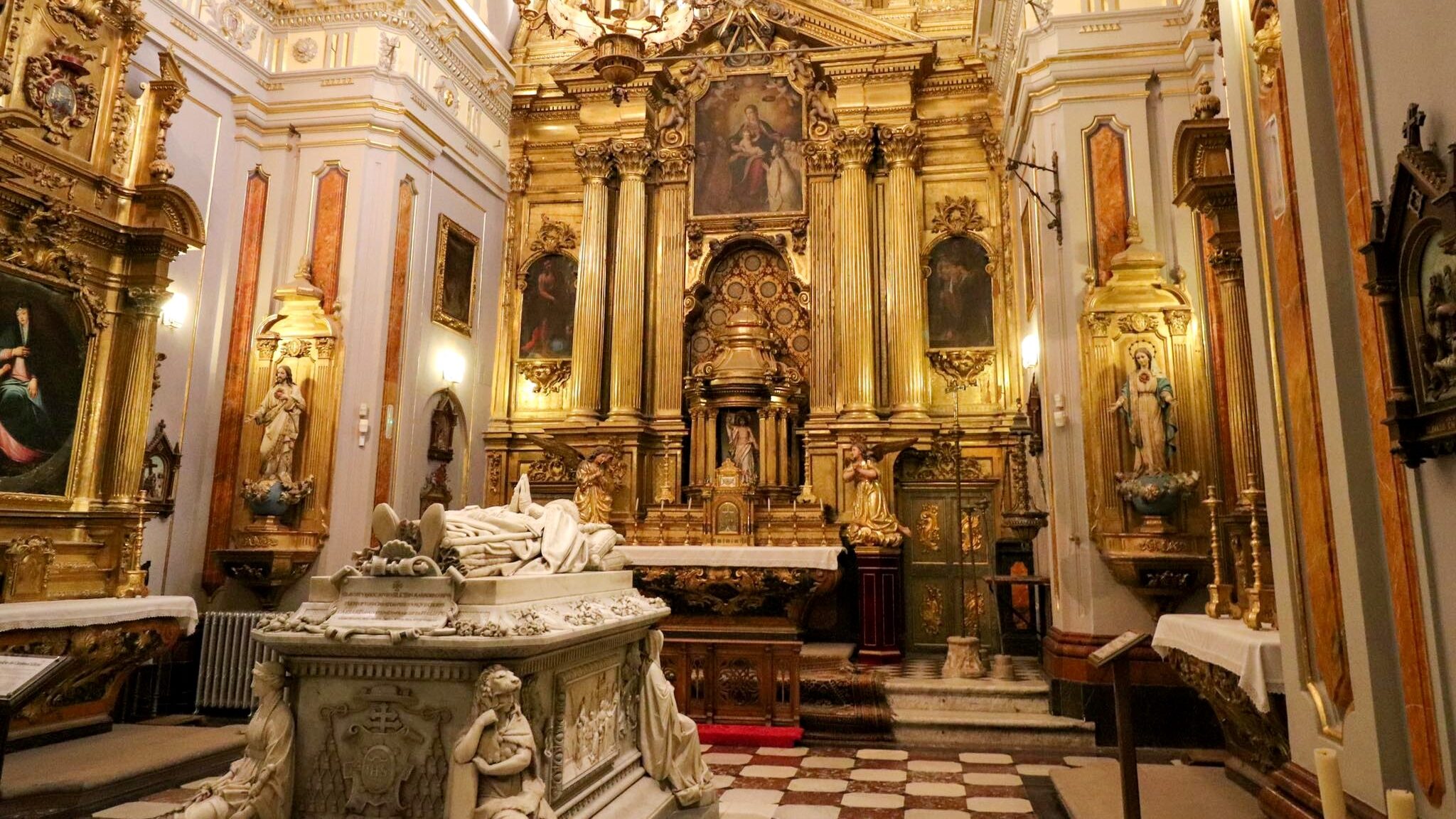
There’s almost an endless number of churches in Toledo to choose from, but none have an interior quite like Real Colegio de Doncellas Nobles (included in the Tourist Bracelet). The building that this gorgeous church stands in was a former school for girls founded in 1551. It was revolutionary at the time for bringing the highest form of education to the lower classes.
The cardinal who founded the College of Noble Maidens was so proud of his project that he chose to be buried here, and his tomb that sits in the church is unique within Toledo. Despite this school being on the Tourist Bracelet, not many people actually visit it as it’s still a relatively unknown attraction in Toledo. It’s well worth adding to your list of things to do in Toledo though.
25. Watch the sunset from the other side of Puente de San Martin

The weather in Toledo can get a bit cold due to its central location. If you happen to be visiting the city and it’s a clear day, I would recommend walking back over the Puente de San Martin to watch the sunset. Toledo was our first stop on our road trip to Toledo and Segovia, so this is actually where we had parked our campervan. Parking in Toledo can be a bit difficult, but there’s free parking in this area and it’s only a short walk from the historic centre.
Toledo has so far been one of my favourite cities in Spain, and I don’t think that’s likely to change anytime soon. Its blend of religion and architecture, and its deep rooted history make it the ideal city to visit for any history lover. Unlike a lot of places, Toledo is still very much a medieval city that has been perfectly preserved and maintained over the centuries. Think of Granada or Seville and their old towns, but on a smaller yet no less charming scale.
Have you been to Toledo before? I would love to hear about your experience in this stunning medieval city in the comment section below. Or if you have any other ideas for day trips from Madrid or things to do in Toledo I would appreciate any recommendations. And of course, don’t forget to follow me on Instagram to keep up to date with my latest trips!
This post may contain affiliate links, which means I may earn a commission from the discount codes used or when a link/ad is clicked. All purchases made will come at no extra cost to you, and I only include products and services that I would personally recommend.
Pin this blog post for later!
